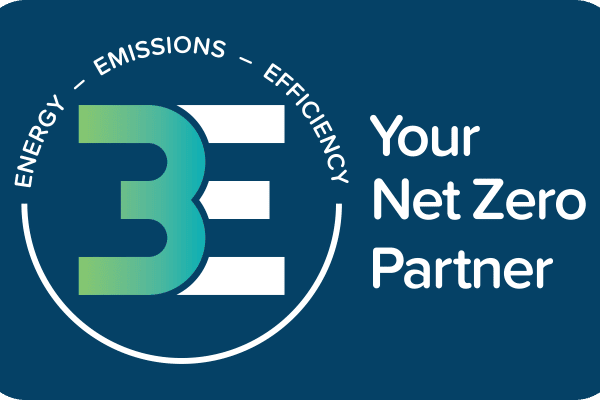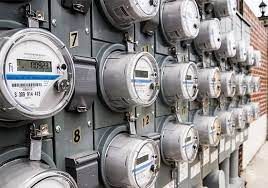There are a number of barriers to implementing energy efficiency projects, not the least of which is the financial one. The old adage ‘it takes money, to make money is certainly true when it comes to funding energy efficiency retrofit projects – it takes money to save money. A large amount of capital is required to fund and implement best practice energy savings projects. After all, there are significant costs involved when contracting services from a single-point-of-contact specialist energy services provider that designs, constructs and implements guaranteed energy-saving solutions. Depending on the solutions and scope of works required, these projects can typically cost anywhere between $500,000 to $5 million for large organisations.
Funding energy efficiency retrofit projects
Sustainability initiatives and energy conservation measures make good sense, but capital is not always available for the purposes of funding energy efficiency retrofit projects that are not core business. Fortunately, there are several ways organisations can address the challenges around funding energy efficiency retrofit projects. There are of course Pros and Cons with each financing strategy, so it’s important to be aware of all the options and details so as to make an informed decision that may help with green-lighting and funding an energy efficiency retrofit project.
In no respective order, here are 7 strategies to fund energy efficiency retrofit projects:
1a) Self-funded: Using Cash Reserves
For organisations that are fortunate enough to have a large war chest in cash reserves or excess liquidity can use these funds to either partially or fully fund the cost of implementing energy efficiency retrofit projects.
In some cases, companies may refrain from doing so for strategic reasons, such as for example sustaining high liquidity ratios to attract investors, or keeping cash reserves ‘for a rainy day’.
In the event where the energy efficiency retrofit project is funded using cash reserves, then it’s recommended to engage a single point of contact service provider that can design, construct and implement energy-saving solutions for a fixed fee. Capping the cost of the project can reduce the risk of cost blow-outs typically involved with large complex energy efficiency retrofit projects.
1b) Self-funded: Re-allocation of resources / Capital Budget Allocation
The vast majority of businesses does not consider energy efficiency as part of their core mission activity; while sustainability may be important to them for PR reasons, they normally focus on being the best provider of services and products in their respective industry. Some organisations may have the flexibility to reallocate resources to free up working capital for investment in energy efficiency retrofit projects. For example, organisations that have large sustainability teams dedicated to implementing energy conservation measures may benefit from outsourcing the function of project design, project management and project implementation to a single-point-of-contact service provider that can deliver fixed price services and guaranteed savings.
2) Raising Capital (Equity financing)
For publicly listed companies that either doesn’t have cash reserves or are unwilling to open the war chest, there may be the option of raising additional capital by issuing new shares for the purposes of funding energy efficiency retrofit projects. While this is certainly an option, shareholders may be reluctant to vote in favour of this strategy as it dilutes ownership and dividend ratios that will affect the performance of their stocks. Raising capital in this way is normally reserved for high-end strategic growth opportunities such as funding expansion of operations or helping facilitate merger and acquisition opportunities.
Similarly, privately-owned companies may consider procuring equity investment from either existing shareholders or by attracting new investors. The capital injection may be used to invest in business growth and cost reduction projects such as energy efficiency retrofit projects. It’s important to keep in mind that this funding strategy would likely dilute ownership rights, profits and dividends.
3) Borrowing (debt financing)
Debt financing is a common go-to funding strategy to fund capital works, but there are of course benefits and indeed drawbacks to borrowing money.
The advantages of funding energy efficiency retrofit projects with debt:
- Maintain ownership: Unlike equity financing, debt financing has no impact on ownership rights.
- Tax deductions: In most cases, the principal and interest repayments for a capital improvement can be classified as a business expense that can be deducted from your business’s income at tax time.
- Lower ‘interest rate’: Analyse the impact of tax deductions on the bank interest rate. If the bank is charging you 10 per cent for your loan and the government taxes you at 30 per cent, there’s an advantage to taking a loan you can deduct.
The disadvantages of borrowing money to fund energy efficiency projects:
- Repayments: The company’s obligation to the lender is to make all payments when they fall due – even if the company becomes insolvent and declares bankruptcy.
- Impacts on credit rating (increases risk profile): It might seem attractive to keep bringing on debt when your company needs money, a practice known as “levering up,” but each loan will be noted on the company’s credit report and will consequently have an adverse impact on its Credit Rating. The more a company borrows, the higher the risk it becomes to existing and potential lenders, which ultimately means higher interest rates on each subsequent loan. This is because the corporate risk profile increases when the debt to equity ratio is high.
- Cash and collateral: Even if you plan to use the loan to invest in an important asset, you’ll have to be sure that the company will generate a sufficient cash flow by the time repayment of the loan is scheduled to begin. Directors will likely be asked to put up collateral to protect the lender in the event that the company defaults on its payments.
- Balance sheet treatment and Debt/Equity Ratio: In some cases, company’s are reluctant to procure too much debt as it will affect the debt to equity ratio which is one of the key performance signals on the balance sheet for shareholders and potential investors.
There are numerous types of commercial lenders and loans including banks, credit unions and private companies that are willing to loan companies capital for “green projects”. The Clean Energy Finance Corporation has emerged as an alternative source of funding; the CEFC is a specialised lender/sustainability financier of energy efficiency retrofit projects in Australia.
Before any financial decision is made about whether to go into debt, it is recommended you seek expert advice from suitably qualified and experienced accountants – ideally by an independent expert or a team of experts.
4) Government grants, schemes
In Australia, State Governments, particularly such as New South Wales and Victorian governments have a number of sustainability grants and energy efficiency programs providing businesses practical support and financial assistance to implement energy conservation measures.
Generally speaking, government grants typically cover the costs associated with energy audits or site assessments (either wholly or partially) and not the total cost of the project itself.
The drawback of these grants and schemes is that they are typically limited in scope and don’t come anywhere near the total cost of funding energy efficiency retrofit projects. There’s also the potential for delays in getting applications submitted and approved.
It’s important however to understand the types of grants available in your region and which ones your organisation may be eligible for as it could help save an organisation money.
In some cases, a specialised energy services company contracted to carry out the prerequisite energy assessments and subsequently implement energy efficiency retrofit projects, can provide assistance in terms of applying for these grants on your behalf. Moreover, some Energy Services Companies offer innovative funding solutions that require zero debt or upfront capital.
5) On-bill financing
On-bill financing is yet another means of funding energy efficiency retrofit projects. Utility On-bill financing is a ‘rent to own option generally offered by utility providers that integrate the cost of implementing an energy efficiency retrofit project as a line item on utility bills. Typically, the savings from the efficiency improvements offset the cost, so the customer sees no material difference in the monthly utility bill.
Utility on-bill financing normally does not require up-front costs and the interest component of repayments may be tax-deductible.
The major drawback of the on-bill financing is that it ties your company to a single utility provider for a long period (i.e. the term of the on-bill financing arrangement), regardless of whether or not that particular energy retailer offers competitive energy rates. There is also the risk of energy being cut if the customer defaults on the debt repayment.
Furthermore, if the energy savings are not guaranteed, the customer bears technical and financial risks.
While on the surface on-bill financing may seem like a more accessible option, in many cases the third party financier will require company owners to provide security or collateral for the on-bill financing arrangement.
Arguably, the biggest disadvantage for utility on-bill financing is that the repayment liability is accounted for on the company’s balance sheet, posing similar challenges and risks associated with commercial loans.
6) Capital leases (Finance leases)

Capital leases are typically used to procure specialised equipment and fund it over the term of the lease without having to pay for it completely upfront, but the total cost over the term of the lease is usually much higher than purchasing the equipment outright.
There is one very important issue that must be considered: capital leasing normally does not include the procurement of energy services. For example, the energy advisory services, engineering and project management resources required to design and implement the energy-saving solutions are in some cases not covered by a capital lease, as typical capital leases only finance the equipment itself and not the engineering services required to commission and optimise it for energy efficiency.
In other words, the majority of costs associated with capital upgrades can be funded through capital leasing, however, there are additional costs involved to design, install, commission, monitor and continuously optimise the energy efficiency of said equipment.
Some argue in favour of Operating Leases to overcome the balance sheet problem. An operating lease is generally not appropriate for assets or equipment that can be depreciated over many years and is more suitable where equipment has perceived high obsolescence, is required for a short period, or is easy to remove and reuse. In the case of energy efficiency retrofit projects, some equipment can not be easily replaced (e.g. Solar PV, Boilers, Chillers, BMS systems etc.).
7) Energy Services Agreement
An Energy Services Agreement is an alternative strategy to funding energy efficiency retrofit projects that don’t involve any upfront capital, equity or debt financing.
So if an Energy Services Agreement is not funded through capital, debt or equity – then what is it and how does it work?
An Energy Services Agreement is a long term service contract where an energy services provider offers an end-to-end delivery of energy efficiency and renewable energy projects. While finance can technically be arranged using any of the finance options above, the true value of an Energy Services Agreement is realised when the service provider funds the project using their own funding sources. However, there are very few suppliers in Australia that can fund and deliver an Energy Services Agreement.
Ecosave has developed its own Energy Services Agreement (ESA) – robust service delivery and funding solution that’s been signed off by one of the Big 4 accounting firms and successfully implemented in the U.S. and in Australia. The Ecosave Services Agreement™ (ESA) can be best described as ‘energy-savings-as-a-service’ that doesn’t require any upfront capital costs, incurs zero debt, is cash-flow positive and can be entirely off-balance sheet.
- Ecosave’s ESA is typically a 7-15 year service arrangement.
- The ESA is a fully-funded turn-key solution that delivers guaranteed savings over the term of the contract.
- Ecosave funds and maintains ownership of all the equipment installed and commissioned. Given the focus is on delivering energy savings, Ecosave reserves the right to change the equipment or solution. This allows Ecosave the opportunity to provide the client with the best possible solutions and incorporate the latest in energy conservation technology.
- The energy savings and cost savings achieved under the ESA are typically greater than the client’s current utility and maintenance expenditure, which means the service fees are funded from the energy savings directly from the operational budget (i.e. cash-flow positive).
- The Ecosave Services Agreement™ differs from a Capital Lease due to the variable pricing component tied directly to performance-based criteria (i.e. the amount of energy savings achieved).
- There is no balloon payment or obligation from the client to purchase the equipment at the end of the service period.
- Ecosave provides integrated services with the objective to achieve the energy savings target. If there is a shortfall from the target, the client pays less. If there are no savings achieved, the ESA does not incur the client a service fee until the solution is revised and savings are realised.
- The ESA savings are guaranteed, therefore Ecosave conducts annual measurement and verification in accordance with the International Performance Measurement and Verification Protocol (IPMVP) to determine if we have over or under-delivered the targeted savings guarantee.
How to decide which funding strategy is appropriate?
After examining each strategy, its important for a company or organisation to engage accounting experts to answer the following questions in regards to funding energy efficiency retrofit projects – see diagram below:
- “Is the company willing, or in a position to fund the energy efficiency retrofit project (whether through debt or equity sources)?”
If the answer to this question is Yes, then the next question is pertinent: - “How do we want this to look on our books from an accounting perspective: On balance-sheet, or Off balance-sheet?”
If On balance-sheet, then the company must determine if they are able to fund the full installation cost of the energy efficiency retrofit project from its capital budget or through sourcing equity from shareholders.
If the company has determined they can’t afford to fund the project with equity or capital budget allocation, then any of the debt financing arrangements are possible avenues to explore.
On the other hand, if the company wishes to keep it OFF balance-sheet, and in particular not utilise borrowings or equity to fund the project, then an Energy Services Agreement like the one successfully implemented in the past by Ecosave (see case study), is the more appropriate option to consider.
Click here to learn more about funding energy efficiency retrofit projects – debt-free, off-balance sheet and cash-flow positive!
Looking for fully-funded turn-key solutions to achieve energy savings? Contact Ecosave to find out how we can partner with you to save money and save resources.
Request a FREE Call-back service








